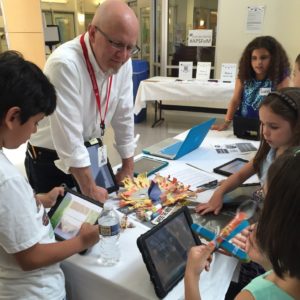by Pam McClellan, Supervisor of Counseling Services
 Our school community works every day to help students thrive and succeed; in fact each Arlington Public Schools (APS) department and school family contributes to meeting the needs of the whole child. For example, we know that there are certain optimal conditions that sustain growth and development; children need food, shelter, medical attention, and clothing; they need to feel safe and secure, and they must feel that they belong in APS.
Our school community works every day to help students thrive and succeed; in fact each Arlington Public Schools (APS) department and school family contributes to meeting the needs of the whole child. For example, we know that there are certain optimal conditions that sustain growth and development; children need food, shelter, medical attention, and clothing; they need to feel safe and secure, and they must feel that they belong in APS.
When these needs are met, a child’s openness to academics is enhanced, and self-esteem blossoms. From food service to campus safety staff to coaches and club sponsors, APS works to foster the whole child.
When a child faces bullying or harassing behavior from another person, the result can deprive a child of their lunch, cause them to feel fearful and sick, and leave them feeling excluded – at any age. It can happen in the lunch line and online, in the bathroom, and in the classroom. Through the adverse experience of bullying or harassing behavior, children can experience a setback – they may no longer feel a sense of belonging, and they may not want to go to school. That sense of belonging and the view of school as a safe place must be restored for the student to resume their focus on instruction.
Of course we hope to thwart bullying/harassing behavior through prevention. As a school system, when we build relationships both between children, and between children and adults, we equip children to be resilient in the face of bullying/harassing behavior, and we increase the chance that they will tell an adult when it does occur and be allies not bystanders when they observe bullying/harassment. Our intervention strategies target both the student who demonstrates bullying/harassing behavior, and the student who has suffered from the behavior. Dealing systemically with bullying/harassing behaviors facilitates comprehensive prevention and intervention, and fosters shared responsibility from the classroom to the living room.
To make a difference, we need children to come and talk to us when they hear or see something. This is even more important when we as adults cannot see the actions because they are online. If you would like to know more about APS bullying prevention there are several resources on our webpage under the Office of Student Services, including tips for parents. Your school’s contact for bullying prevention is listed there. All schools engage in bullying prevention activities; please do not hesitate to reach out to your child’s professional school counselor to learn more. Guided by the Virginia Department of Education, please also find our School Board’s adopted policy on the APS webpage under the School Board link (APS Policy 25-1.17).
 Contact
Contact  Calendars
Calendars Careers
Careers Engage
Engage  District
District